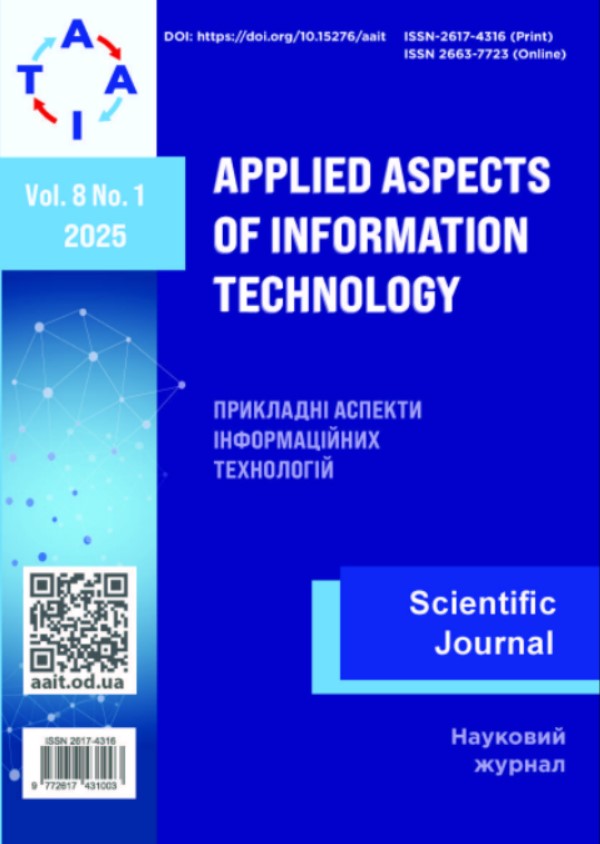Investigation of the efficiency of neural network models for developing a classifier of ophthalmic pathologies
DOI:
https://doi.org/10.15276/aait.08.2025.8Keywords:
machine learning, ophthalmic disease classification, fundus images, deep learning, VGG16, VGG19, EfficientNet, medical image analysisAbstract
This study presents the development and evaluation of a machine learning-based system for the classification of ophthalmic diseases using fundus images. The dataset consists of images categorized into four main classes: cataract, diabetic retinopathy, glaucoma, and healthy eye. To ensure the accuracy and reliability of the models, the data underwent preprocessing steps, including outlier detection, normalization, balancing, and splitting into training and testing sets. Three deep learning models - VGG16, VGG19, and EfficientNet were utilized for disease classification. The experimental results demonstrated high prediction accuracy across different disease categories, with EfficientNet achieving the highest performance (up to 96.94% for diabetic retinopathy). The system allows users to upload eye images, select a model, and obtain diagnostic predictions with specified accuracy levels. The models were rigorously tested using the Python unittest framework, confirming their stability and reliability. The findings highlight the potential of machine learning in improving ophthalmic disease diagnosis, reducing diagnostic time, and enhancing medical decision-making. The integration of these models into medical practice can significantly improve the quality of healthcare services and assist doctors in providing more efficient and accurate diagnoses.










